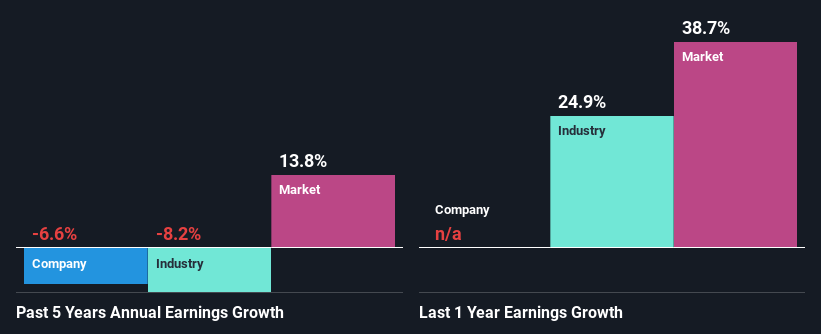Brigham Minerals, Inc.'s (NYSE:MNRL) Stock Going Strong But Fundamentals Look Weak: What Implications Could This Have On The Stock?
Brigham Minerals (NYSE:MNRL) has had a great run on the share market with its stock up by a significant 22% over the last three months. However, in this article, we decided to focus on its weak fundamentals, as long-term financial performance of a business is what ultimatley dictates market outcomes. In this article, we decided to focus on Brigham Minerals' ROE.
ROE or return on equity is a useful tool to assess how effectively a company can generate returns on the investment it received from its shareholders. Put another way, it reveals the company's success at turning shareholder investments into profits.
See our latest analysis for Brigham Minerals
How Do You Calculate Return On Equity?
The formula for return on equity is:
Return on Equity = Net Profit (from continuing operations) ÷ Shareholders' Equity
So, based on the above formula, the ROE for Brigham Minerals is:
9.7% = US$68m ÷ US$700m (Based on the trailing twelve months to December 2021).
The 'return' is the profit over the last twelve months. So, this means that for every $1 of its shareholder's investments, the company generates a profit of $0.10.
What Is The Relationship Between ROE And Earnings Growth?
Thus far, we have learned that ROE measures how efficiently a company is generating its profits. Based on how much of its profits the company chooses to reinvest or "retain", we are then able to evaluate a company's future ability to generate profits. Assuming everything else remains unchanged, the higher the ROE and profit retention, the higher the growth rate of a company compared to companies that don't necessarily bear these characteristics.
Brigham Minerals' Earnings Growth And 9.7% ROE
When you first look at it, Brigham Minerals' ROE doesn't look that attractive. A quick further study shows that the company's ROE doesn't compare favorably to the industry average of 15% either. Given the circumstances, the significant decline in net income by 6.6% seen by Brigham Minerals over the last five years is not surprising. We believe that there also might be other aspects that are negatively influencing the company's earnings prospects. Such as - low earnings retention or poor allocation of capital.
With the industry earnings declining at a rate of 8.2% in the same period, we deduce that both the company and the industry are shrinking at the same rate.
Earnings growth is a huge factor in stock valuation. It’s important for an investor to know whether the market has priced in the company's expected earnings growth (or decline). By doing so, they will have an idea if the stock is headed into clear blue waters or if swampy waters await. Has the market priced in the future outlook for MNRL? You can find out in our latest intrinsic value infographic research report.
Is Brigham Minerals Using Its Retained Earnings Effectively?
Brigham Minerals' high three-year median payout ratio of 135% suggests that the company is depleting its resources to keep up its dividend payments, and this shows in its shrinking earnings. Paying a dividend higher than reported profits is not a sustainable move. You can see the 2 risks we have identified for Brigham Minerals by visiting our risks dashboard for free on our platform here.
In addition, Brigham Minerals has been paying dividends over a period of three years suggesting that keeping up dividend payments is preferred by the management even though earnings have been in decline. Based on the latest analysts' estimates, we found that the company's future payout ratio over the next three years is expected to hold steady at 122%. Regardless, the future ROE for Brigham Minerals is predicted to rise to 16% despite there being not much change expected in its payout ratio.
Conclusion
On the whole, Brigham Minerals' performance is quite a big let-down. Specifically, it has shown quite an unsatisfactory performance as far as earnings growth is concerned, and a poor ROE and an equally poor rate of reinvestment seem to be the reason behind this inadequate performance. Having said that, looking at current analyst estimates, we found that the company's earnings growth rate is expected to see a huge improvement. To know more about the latest analysts predictions for the company, check out this visualization of analyst forecasts for the company.
Have feedback on this article? Concerned about the content? Get in touch with us directly. Alternatively, email editorial-team (at) simplywallst.com.
This article by Simply Wall St is general in nature. We provide commentary based on historical data and analyst forecasts only using an unbiased methodology and our articles are not intended to be financial advice. It does not constitute a recommendation to buy or sell any stock, and does not take account of your objectives, or your financial situation. We aim to bring you long-term focused analysis driven by fundamental data. Note that our analysis may not factor in the latest price-sensitive company announcements or qualitative material. Simply Wall St has no position in any stocks mentioned.

